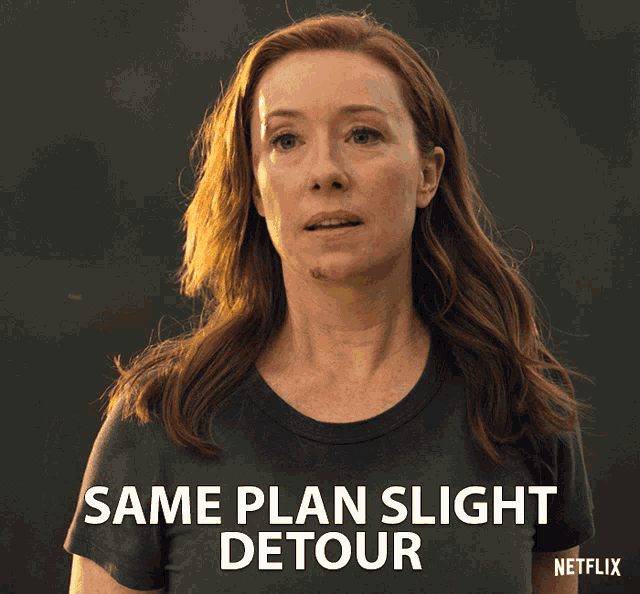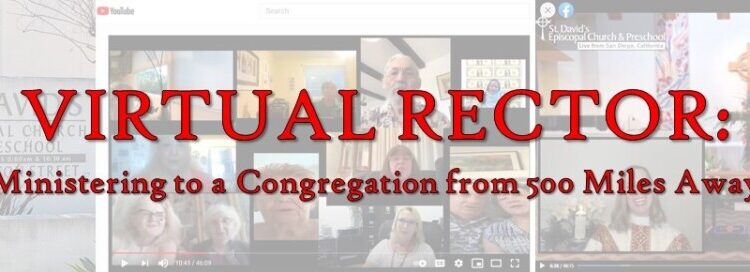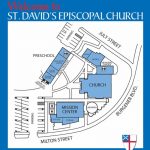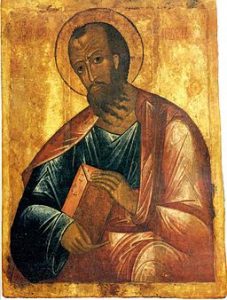Introduction
In January 2020, I accepted the call to be the Rector of St. David’s Episcopal Church and Preschool in San Diego. This is a pastoral size congregation, located in the Bay Park/Clairemont neighborhood of San Diego.
I was attracted to this parish because it had a thriving Preschool. They also were highly active in outreach to the community, operating a weekly Food Pantry ministry, and hosting the rotating Interfaith Winter Homeless Shelter. There seemed to be great potential here: diverse revenue streams from the Preschool and a Cell Tower; a great location, a large, beautiful campus, plus dedicated lay people who loved God and were committed to caring for the least in the community. It was exactly the kind of community I was looking to lead – so, I accepted the call, and my start date was set for late April, after Easter.
But in mid-March, the Covid-19 pandemic closed everything down. The Preschool closed, and most of the church’s revenue streams ground to a halt. The Vestry no longer knew if they could afford to hire me. They got a Paycheck Protection Program (PPP) Loan from the government, but even so, they could not afford to pay my contracted salary. This was crucial, as the cost of living in San Diego is at least double the cost of living in my current location of Sacramento. After much prayer, I let the Vestry know that they could pay me a lower salary if I remained in Sacramento.
Truly, this kind of arrangement would have been unthinkable pre-pandemic. How can a priest be a rector of a church from 500 miles away?

Due to the pandemic, worship and nearly all of the church’s programming moved online. Furthermore, the Bishop directed clergy and staff to work remotely, and to forgo all in person meetings and pastoral visits. Thus, most of the things I could do from a home in San Diego to serve St. David’s, I could also do from Sacramento. I suddenly found myself cast in the role of a Virtual Rector. By this, I mean I am a rector who connects and leads her people solely through technological means – the internet, phone, even the postal mail, but not in person.
Here is a quick look at some of the ways I have approached worship, pastoral care, built relationships, related to the physical property, and connected with those who are not on the internet. I had to just dive into this; there was no manual for how to lead a congregation online only. Furthermore, most of the scholarship around Virtual Ministry simply encourages the church to be present online and argues that it is theologically possible to have religion in a virtual setting. But they were speaking from a position in which presence on the internet was one of many possible options. With the pandemic, the theoretical questions about whether the church should be on the internet evaporated overnight, and suddenly we found ourselves forced to be there, with no preparation or forethought. This experience has felt like building the boat while trying to sail it, and if the things I have learned can help other potential Virtual Rectors to structure a ministry to serve communities where they are not physically present, then this will be an important advancement for the Church coming out of this pandemic experience.
Online Worship
I had about a month to research and plan before my first Sunday with St. David’s, so I looked at what other churches were doing. Then I consulted with my tech expert (my husband), who suggested we use OBS because then we could have the words for the hymns and liturgy on the screen, plus the video feed from both Sacramento and San Diego via Zoom. After a few weeks, we abandoned leading worship live and simply had everything prerecorded so that the service could be edited together in advance.
I wanted to share our worship as widely as possible, so I conducted a survey of my new parish to find out what kinds of tech they already use and which social media platforms they were familiar with. Facebook came out of top, so we stream the service live to Facebook from OBS and premiere it on YouTube each Sunday simultaneously.
Worship is about community, and so utilizing the comments and ‘reactions’ on Facebook helps people to know and feel like they are sharing an experience together. This is phatic communication,[1] and it lets people in cyberspace know that they are not alone, even though everyone is in different homes. Including as many different people as possible on the screen each week is also important, as it allows people to see one another. It also allows children and youth to be a part of leading worship regularly.
Examples of Online Worship Services at St. David’s: |
Before our first service together, I put together a video explaining how online worship would look and some of the rationale for why we would be using Morning Prayer since ‘virtual communion’ is not permitted in the Episcopal Church.
To provide communion to my parishioners, we formed monthly “Small Group Worship” groups of less than 10 people.[2] Each group was assigned a LEV (Licensed Eucharistic Visitor) who would attend an outdoor service at a neighboring church and receive consecrated hosts for their group. Then, in a backyard service, they would distribute communion (host only) to their group following all covid protocols.
Pastoral Care
Pastoral care is crucial, and it needs time and relationship to build trust. Here are some ways I’ve provided pastoral care for my parishioners:
- I conducted a Listening Campaign as an important first step in getting to know people and letting them know I am here and available to them
- I’ve prayed with people over the phone and on Zoom before surgeries. Of course, I can’t anoint people through those platforms, but saying the familiar words from the Book of Common Prayer brings comfort
- Used texting for updates on medical procedures and to check in
- I have called people in the hospital, since visits are not allowed (and I am currently 500 miles away)
- Gave Last Rites over Skype to a parishioner who was dying due to Covid
Due to not being in the area, I could not conduct ‘physically distant’ in person pastoral calls. However, utilizing technology allowed me to be present with and care for people when they’ve needed their priest.
Building Relationships Through a Listening Campaign
Before the pandemic, I shared with the Vestry that I wanted to launch a “Listening Campaign” as soon as I arrived. I thought I would meet with people in person, but with the pandemic, that was not possible. Instead, I had:
- 30-minute meetings with each parishioner (an hour for couples)
- Meetings were on Zoom or the phone – their choice
- Used signupgenius.com for scheduling
- I asked four questions: 1) Tell me about yourself. 2) What brought you to St. David’s? 3) What keeps you at St. David’s? and 4) What are your hopes and dreams for our church? Not everyone answered every question
Ultimately, I interviewed 74 members, comprising nearly 60% of the active parish membership. This was a time consuming but invaluable project to undertake. It allowed me to get to know and build connections with many parishioners and get a sense of how the Holy Spirit is moving by and through this congregation.
The Physical Property
I’ve only been on the church property twice – once to interview, once to visit after I accepted the call. Luckily, strong and engaged lay leaders and the staff have taken extra responsibility for caring for the property through this time.
During the pandemic, only the Preschool and Food Pantry ministries took place on the church campus, adjusted to covid protocols. Frequent meetings with the leaders of those ministries was imperative to make sure the facilities were being managed. Photos and videos were emailed or texted to me so that I could see what they were talking about. This also helped me to familiarize myself with the campus.
The Literally Dis-Connected
As an older congregation, for many there was a steep learning curve when it came to navigating church online. Yet, there are also a number of parishioners that don’t have access to the internet at all, so keeping them connected was imperative and took some creativity.
- Before I arrived, the Senior Warden organized a phone tree ministry called “Care Callers.” Through them, we were able to learn who did not have access to technology and how we might keep them connected, in addition to the calls
- For parishioners who can’t watch the service online, we burn DVDs of the service
- For parishioners who don’t have a DVD player, the Parish Administrator prints out the bulletin and my sermon and mails it to them each week
Virtual Ministry Recommendations
Leading a church as a Virtual Rector is a ministry model that could be utilized in many settings. It could be used for churches that can’t afford a full-time priest, or even a part-time one. It could be used for congregations that don’t have clergy living nearby them, or where it is too expensive for a priest to live. It could also be used to plant entirely virtual ministries and congregations, especially as now due to the pandemic we have become even more accustomed to living our lives by and through the internet.
Keys to being successful as a Virtual Rector:
- Be truly present, even online. Virtual Ministry is a ministry of presence
- Two-way interactions matter, so being on a platform where you can be face to face, coupled with exchanging emails, messages, or comments on social media builds connection
- Be intentional about letting people know you’re there for them and when you’re available
- Share frequent updates about what you’re doing/working on via e-newsletters, social media posts, and regular communal meetings on Zoom (we called them Town Hall Forums), for example
- Excellent communication is imperative
- Discuss challenges and concerns openly
- Be honest about what is going well and what isn’t
Think about Paul’s ministry in the Epistles.[3] He was not present with the communities he pastored, yet he led, counseled, and ministered to them from across the miles. And, letters traveled much more slowly then! Thanks to the internet, we can easily and instantly connect to people in real time, and that makes a big difference. Reminding my parishioners that we are not the first to be in a long-distance ministry relationship was helpful.
Things to consider as you plan a Virtual Ministry:
- Lay out expectations of what is possible to accomplish across the miles in advance: worship, programming, pastoral care, leadership, and fellowship
- Having well defined roles for those who are ‘on the ground’ is key. Who manages the property (if there is one)? Who coordinates administrative tasks?
- Decide how often leaders need to meet to stay informed
- What are the best platforms to use? What do people already know how to use and what kinds of technology are they capable of learning?
Virtual Ministry is incarnational. I have come to know my parishioners in the same ways or perhaps even deeper ways than I would if I were there physically. Utilizing the internet, on platforms of Zoom, Facebook, YouTube, and email, we have built relationships, shared joys and challenges, looked into each other’s eyes, laughed, and prayed together. While I have not yet shared sacramental communion with St. David’s, I still feel that we are joined in the mystical communion of the Body of Christ – in real life. Through coming to know and care for one another, God’s love connects, calls, and enables us to do ministry together daily. I am the Rector of St. David’s in every meaningful and practical way, even though I cannot say where the bathroom is on the physical campus. Ministry is always first and foremost about relationships, and the pandemic has showed that we can have deep relationships and build community that is very real, incarnational, and present, even when we are physically separated. Being a Virtual Rector is possible. Post-pandemic, it is a model that could help strengthen and reimagine parochial ministry in the Church.
[1] Zirschky, Beyond the Screen: Youth Ministry for the Connected But Alone Generation, 42.
[2] Paulsen, “‘House Churches’ Offer Return to in-Person Worship by Following Practice of Early Christians.”
[3] Thompson, The Virtual Body of Christ in a Suffering World, 31.
Suggestions for Further Reading:
Anderson, Keith and Drescher, Elizabeth. The Digital Cathedral: Networked Ministry in a Wireless World. New York: Morehouse Publishing, 2015.
—. Click2Save REBOOT: The Digital Ministry Bible. New York: Church Publishing, 2018.
Berger, Teresa. @Worship: Liturgical Practices in Digital Worlds. London; New York: Routledge, Taylor Francis Group, 2018.
Drescher, Elizabeth. Tweet If You [Heart] Jesus: Practicing Church in the Digital Reformation. Harrisburg: Morehouse. 2011
George, Susan. Religion and Technology in the 21st Century: Faith in the E-World. Hershey, PA: Information Science Publishers, 2006.
Hipps, Shane. The Hidden Power of Electronic Culture: How Media Shapes Faith, The Gospel, and Church. Grand Rapids, MI: Zondervan, 2005.
Paulsen, David. “‘House Churches’ Offer Return to in-Person Worship by Following Practice of Early Christians.” Episcopal News Service (blog), September 10, 2020. https://www.episcopalnewsservice.org/2020/09/10/house-churches-offer-return-to-in-person-worship-by-following-practice-of-early-christians/.
Thompson, Deanna A. The Virtual Body of Christ in a Suffering World. Nashville: Abingdon Press, 2016.
Wagner, Rachel. Godwired: Religion, Ritual, and Virtual Reality. New York: Routledge, 2012.
Zirschky, Andrew. Beyond the Screen: Youth Ministry for the Connected But Alone Generation. Nashville: Youth Ministry Partners and Abingdon Press, 2015.





Beautifully written and presented. Thank you for answering our call… We are blessed to have you!
Having lived and experienced this journey with Pastor Jocelynn, I continued to be impressed by the spirit filled ministry that has thrived from a distance. St David’s Church and Preschool is blessed to have such an inspirational leader
This has been a beautiful journey with Rev. Jocelynn. I am especially pleased with the ability to include our children and youth in weekly worship and special events. It has also given us a chance to include our preschool children. I have truly been touched by the “Spiritual Eucharist” each week. St. David’s has been blessed.
Jocelyn,
I am so glad you followed your call to St Davids in this strange and troublesome time. I believe you have connected with us and served our pastoral needs. I look forward to deepening our walk when we can regather and reconnect.
Thank you and Congratulations,
Roseann, Bill and Andy